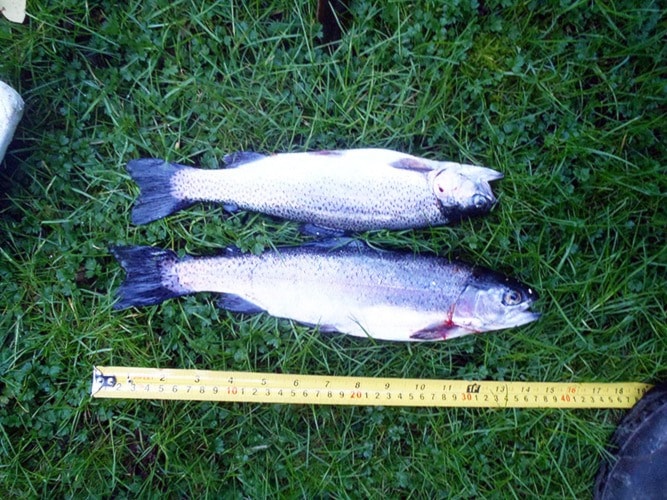I don't know about you but I had trouble getting my head around the fact that this long weekend was so far in advance of the what we used to call the 24th of May Long Weekend in celebration of Queen Victoria's birthday.
Be that as it may, it is the traditional beginning of the camping season and is often associated with surviving under tarps put up to try to keep out of the rain. On the positive side, our local conditions were generally sunny and quite warm without major rainstorms so it had to be a success.
On the saltwater fishing front it has been a mixed bag. One of the current challenges is to navigate through large amounts of floating seaweed when trolling. The weed that is causing most of the problems is called sargassun – it came to our shores about the time we imported oysters and clams from Japan for our aquaculture.
It has been creating problems for trollers fishing off Grants Reef. When we fished off Tribune Bay on Sunday of the long weekend it was a nuisance; but you could troll; even though you had to frequently clear your gear of weeds. On the way home up Baynes Sound we encountered quite large floating masses of the weed that would have made trolling impossible. If confronted with this problem I suggest drift fishing if you are equipped with small drift lures and there are bait schools in reasonably shallow water such as Grants Reef.
We spent about five hours fishing off Tribune Bay on Sunday, May 17, with limited success. We lost one nice chinook to a harbour seal, which is always a disappointment. I counted 15 boats in the Tribune Bay area on Sunday morning, plus several that were fishing the Flora Islands on the outside. There was one commercial prawn set of prawn traps. We saw two other boats using a net and another playing what appeared to be halibut – generally it was pretty slow.
About an hour before slack tide we tried shallower water with jigs and took two nice lingcod in the eight- to 10-pound range. While travelling into the shallows we went over several schools of bait in depths varying from 80 to 100 feet. After the jigging we returned to the area with the bait and took a prime chinook in the eight- to nine-pound range and an incidental brown rockfish. All things considered it was a successful day on the water.
On the Friday I joined a group of fellow fly fishers from the Comox Valley Fly Fishing club on Spider Lake. Spider Lake along with several other popular lakes had been stocked with by catchable trout by the Freshwater Fisheries Society well ahead of the weekend.
When I launched there were good numbers of fish actively feeding on a hatch of chironomids. I personally did not want to catch the newly planted fish, rather I was targeting what we call the second-year fish which run about 13 to 14 inches, have bright red flesh and are exceptionally nice eating fish.
I started with leech patterns and slowly worked through several other patterns, fished deep water varying from 15 to 25 feet. I was getting considerable action, but none of them were of the second-year class. Shortly before lunchtime I put on a sedge pupa patterns on both sinking lines and started fishing a deep water ledge of about 25 feet. In a short space of time I was rewarded with two prime fish in the 14-inch class.
A fellow angler and I anchored beside each other for lunch and exchanged ideas on our patterns. I shared one of the sedge patterns with him and just following our lunch break he took two nice second year fish in deep water.
The weekend crowd had arrived on the lake; but in spite of the large numbers of canoeists, kayakers and fishers everybody was having a quality experience. The absence of motors of all types on this lake may be a factor.
Ralph Shaw is a master fly fisherman who was awarded the Order of Canada in 1984 for his conservation efforts. In 20 years of writing a column in the Comox Valley Record it has won several awards.
